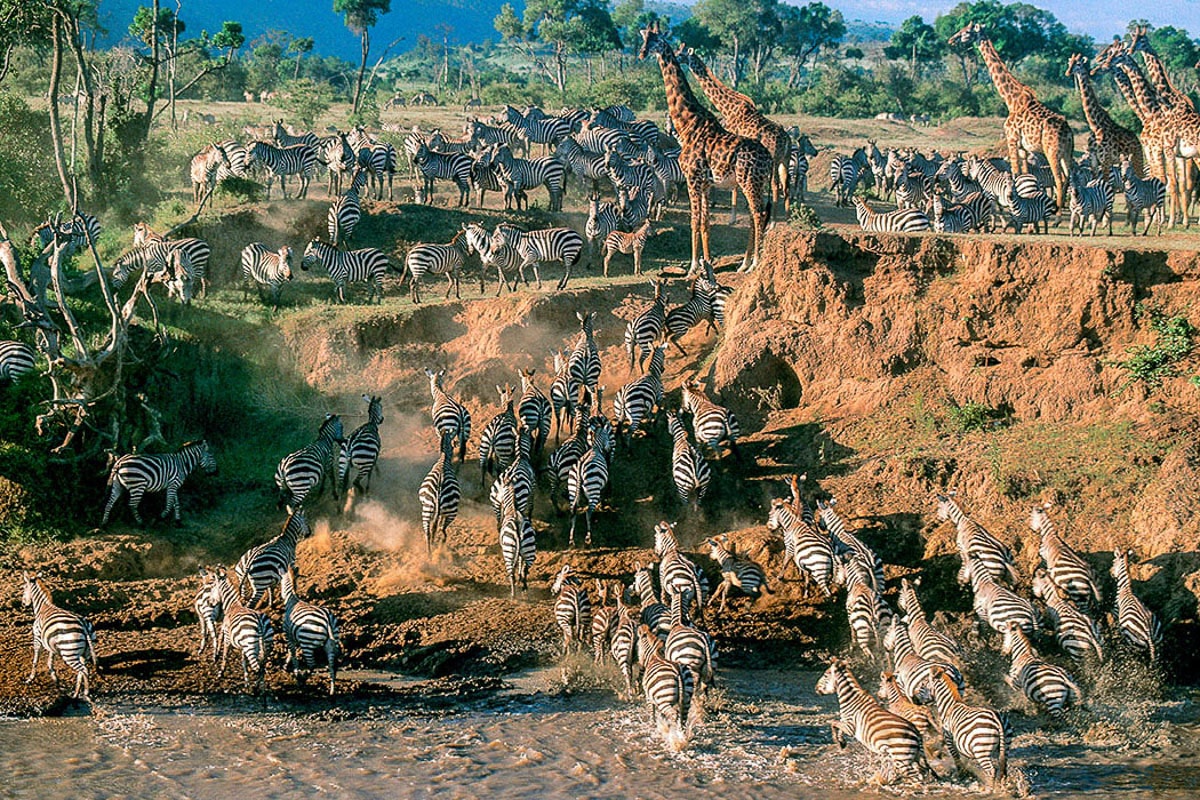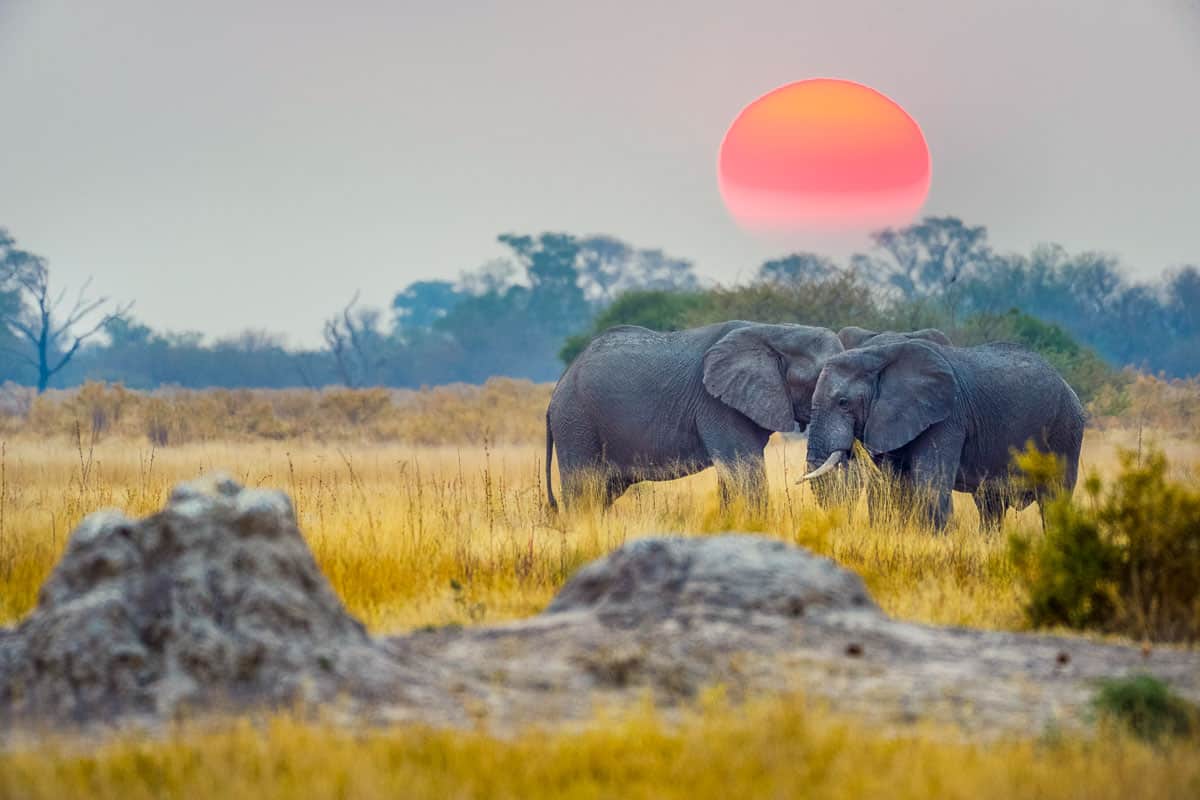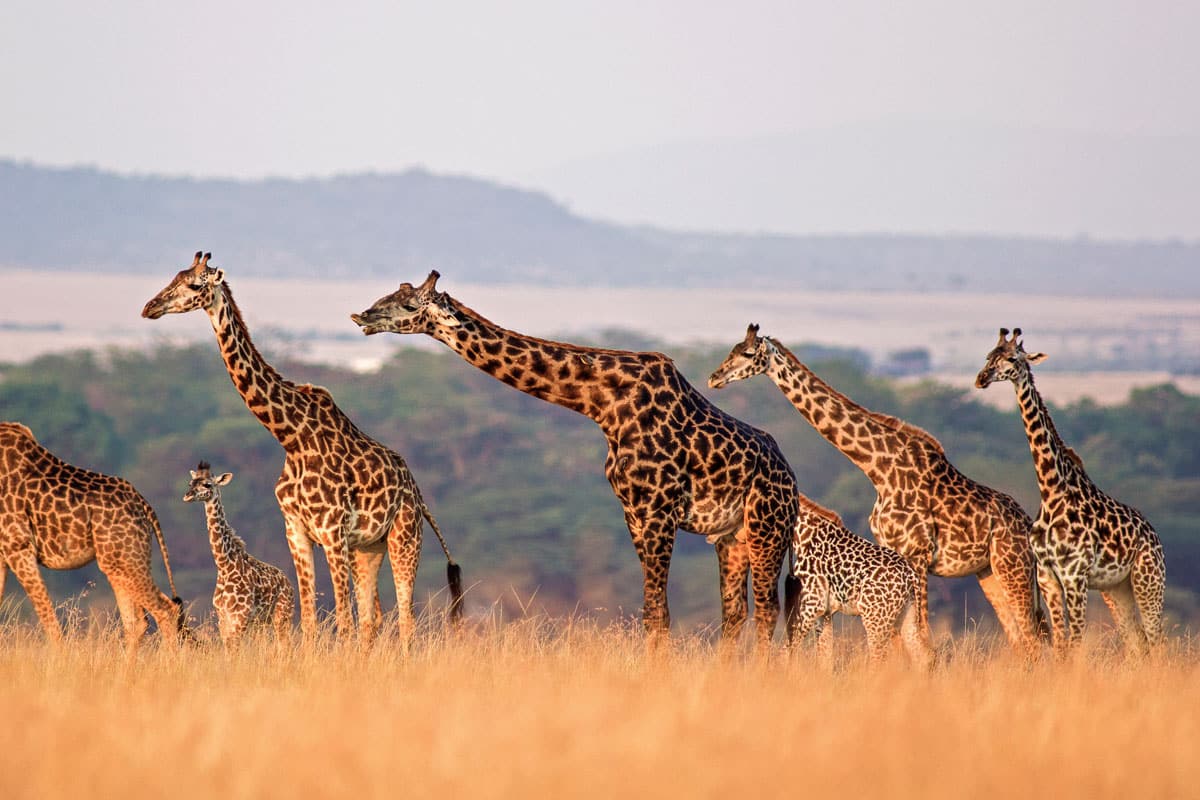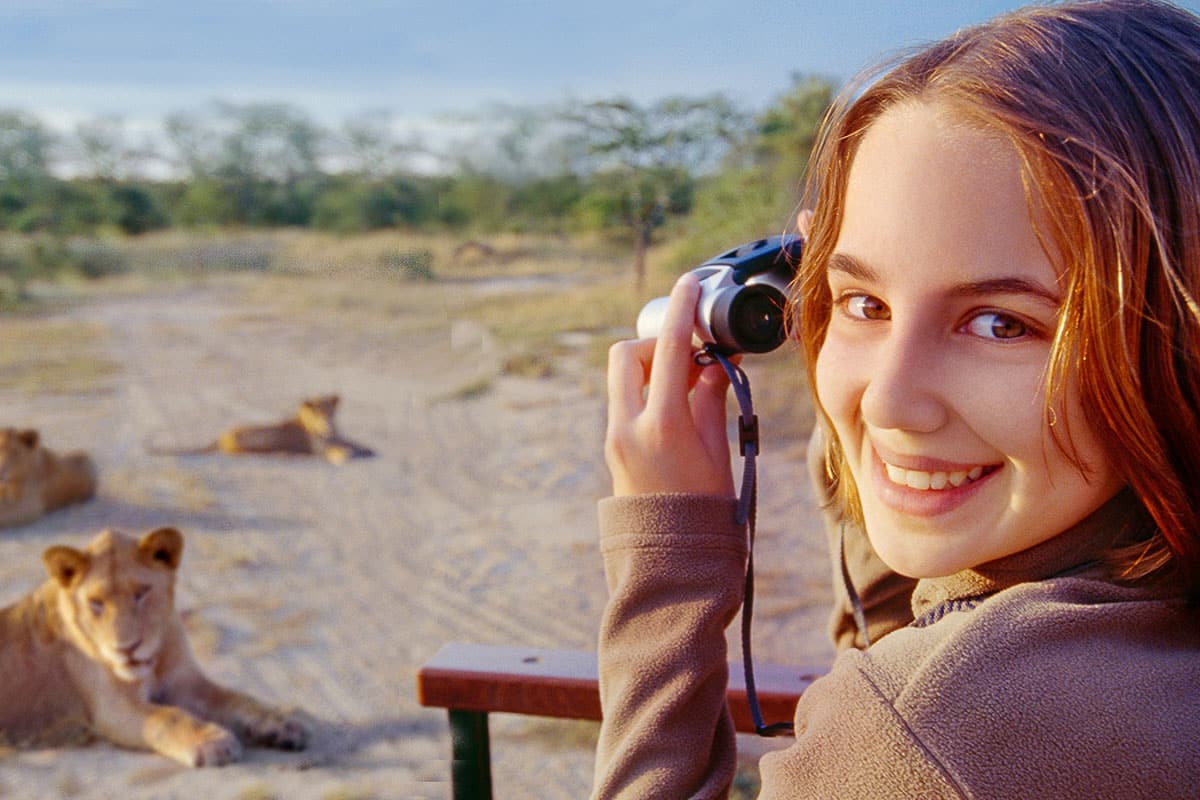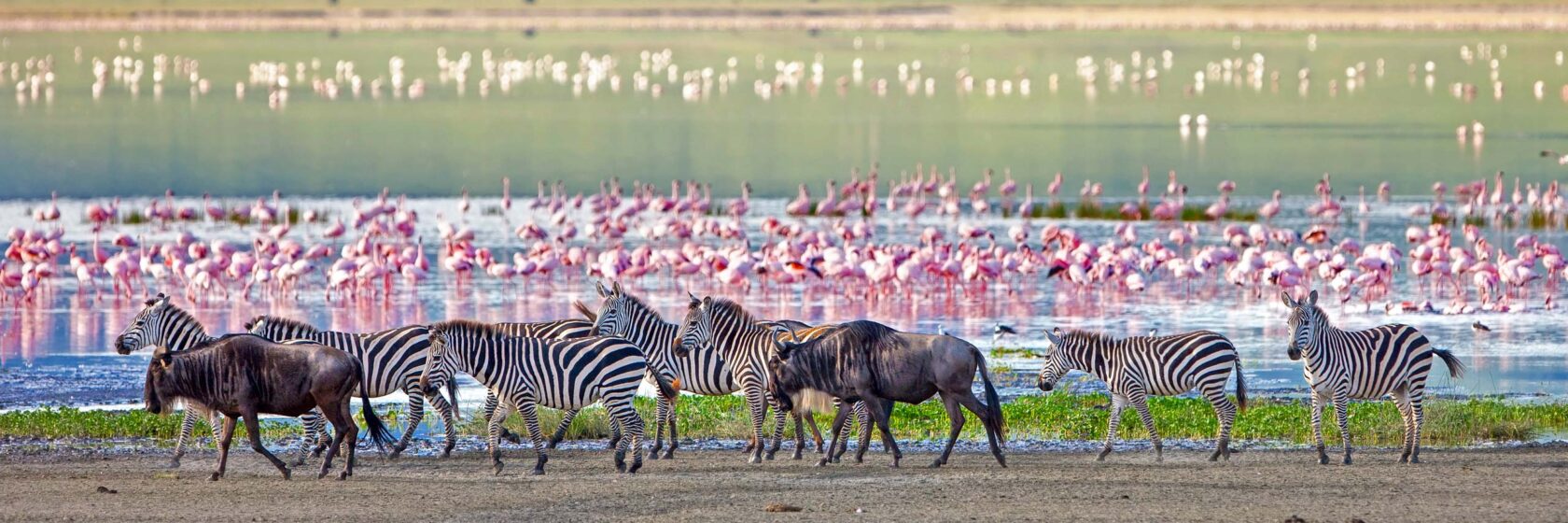
Tanzania
Tanzania’s Best National Parks for Safari
Tanzania has some of the most phenomenal national parks for wildlife viewing on the planet. We ensure that you actually experience these incredible ecosystems (rather than just ‘checking them off the list’ as more rushed safaris do). With multiple days to explore, you’ll maximize your chances of astounding wildlife sightings, and of seeing the more elusive species.
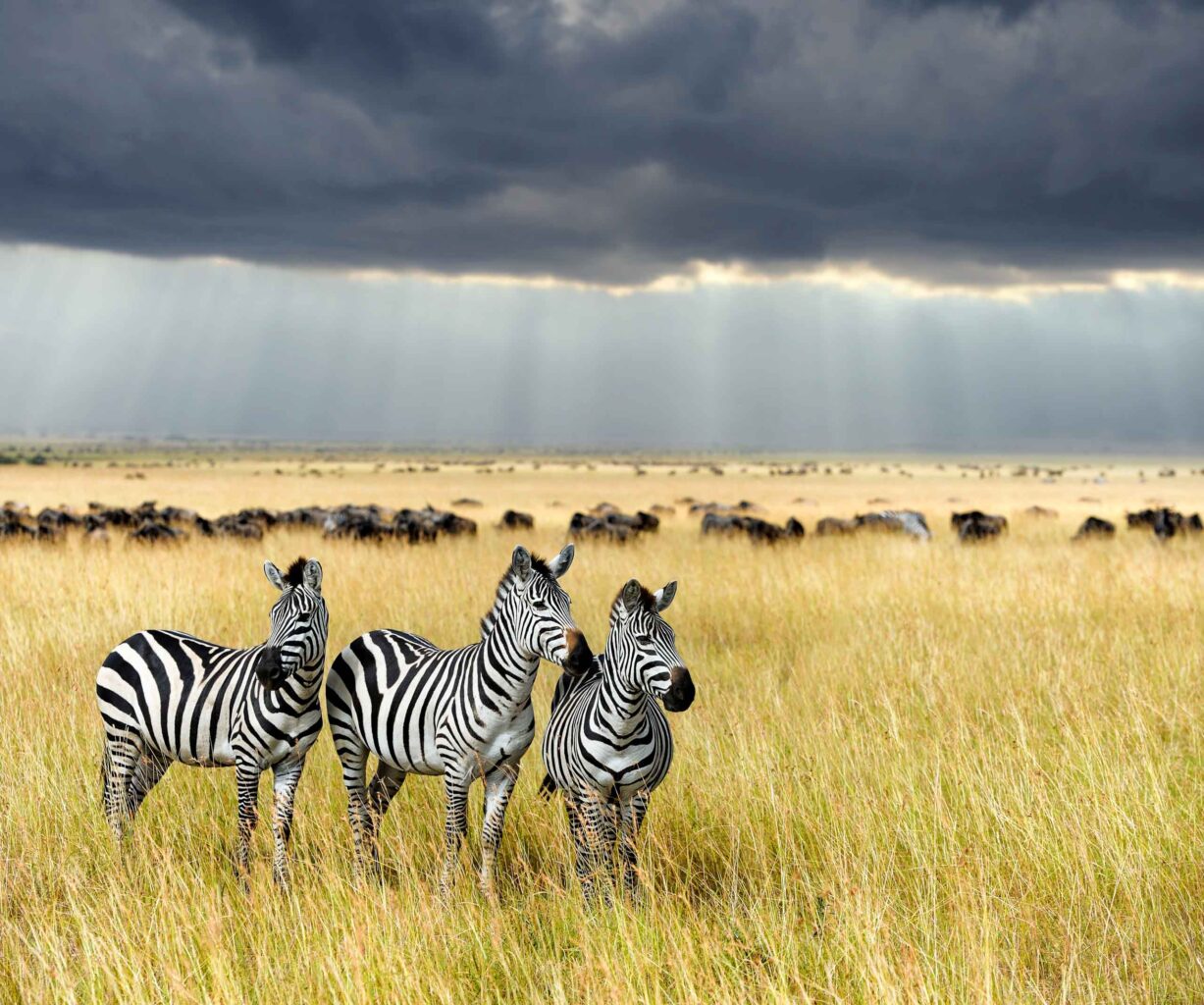
Serengeti National Park
One of the world’s most famous places for safari and Tanzania’s largest and best-known national park, Serengeti is a treasure that we’ll explore from our secluded but perfectly-situated mobile camps.
Meaning “endless plains” in Maasai, the Serengeti extends for more than 5,600 square miles across vast plains, and is home to the most varied collection of terrestrial wildlife on the planet. The Serengeti, the land of the great migratory herds and their predators, has three distinct landscapes—open, grassy plains in the south; the acacia-dotted savanna in the center; and black clay plains to the west—and we’ll make sure you experience the beauty of each.
Our masterful guides, who have an eye for spotting even the most elusive animals, will lead you on game drives to remote areas deep inside the park where other safaris do not venture. We’ll traverse the open plains and pass rock kopjes on the hunt for prides of lion sleeping in the sun, leopard hidden in the trees, cheetah on the hunt, and roaming troops of baboon. Other wildlife we may spot include rhino, wild dog, spotted hyena, golden jackal, the tiny dik-dik, buffalo, hippo, giraffe, ostrich and magnificent herds of elephant.
Visited on: Tanzania: Great Migration Safari, Tanzania Private Journey, and Tanzania Family Private Journey
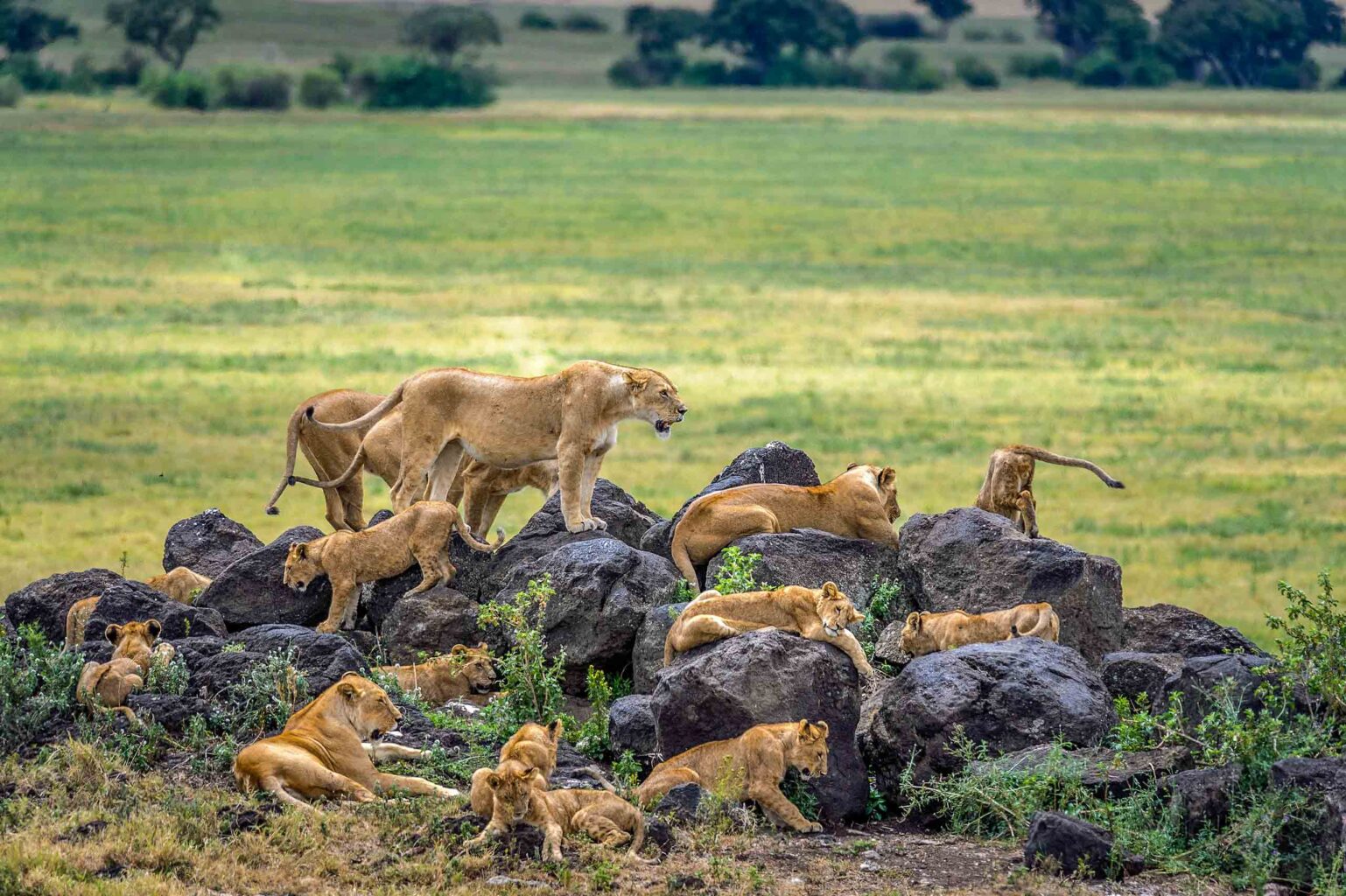
Ngorongoro Crater
Within the Serengeti lies the Ngorongoro Crater, an otherworldly site. This is the world’s largest intact volcanic caldera, a grass-filled crater where everything from herds of elephant to prides of lion have made their home. Often called “Africa’s Eden,” the crater is a quintessential experience of your African safari.
It’s in the Ngorongoro Crater where you can search for the “Big 5,” though we’ll never let a checklist take precedence over a quality safari experience. All of the “Big 5”—lion, elephant, buffalo, leopard, and the endangered black rhino—live within this 16-mile-wide ecosystem, along with zebra, wildebeest, black-maned lion, antelope, gazelle, hippo, flamingo, warthog, giraffe, eland, and more.
The drive down into the grassy floor of the crater 2,000 feet below the rim is magical as we descend into a wildlife haven that boasts the highest density of mammals in Africa—and the highest density of lion in the world. In fact, it’s one of the best places to spot a lion because the prides here are so large.
Visited on: Tanzania: Great Migration Safari and Tanzania Private Journey.
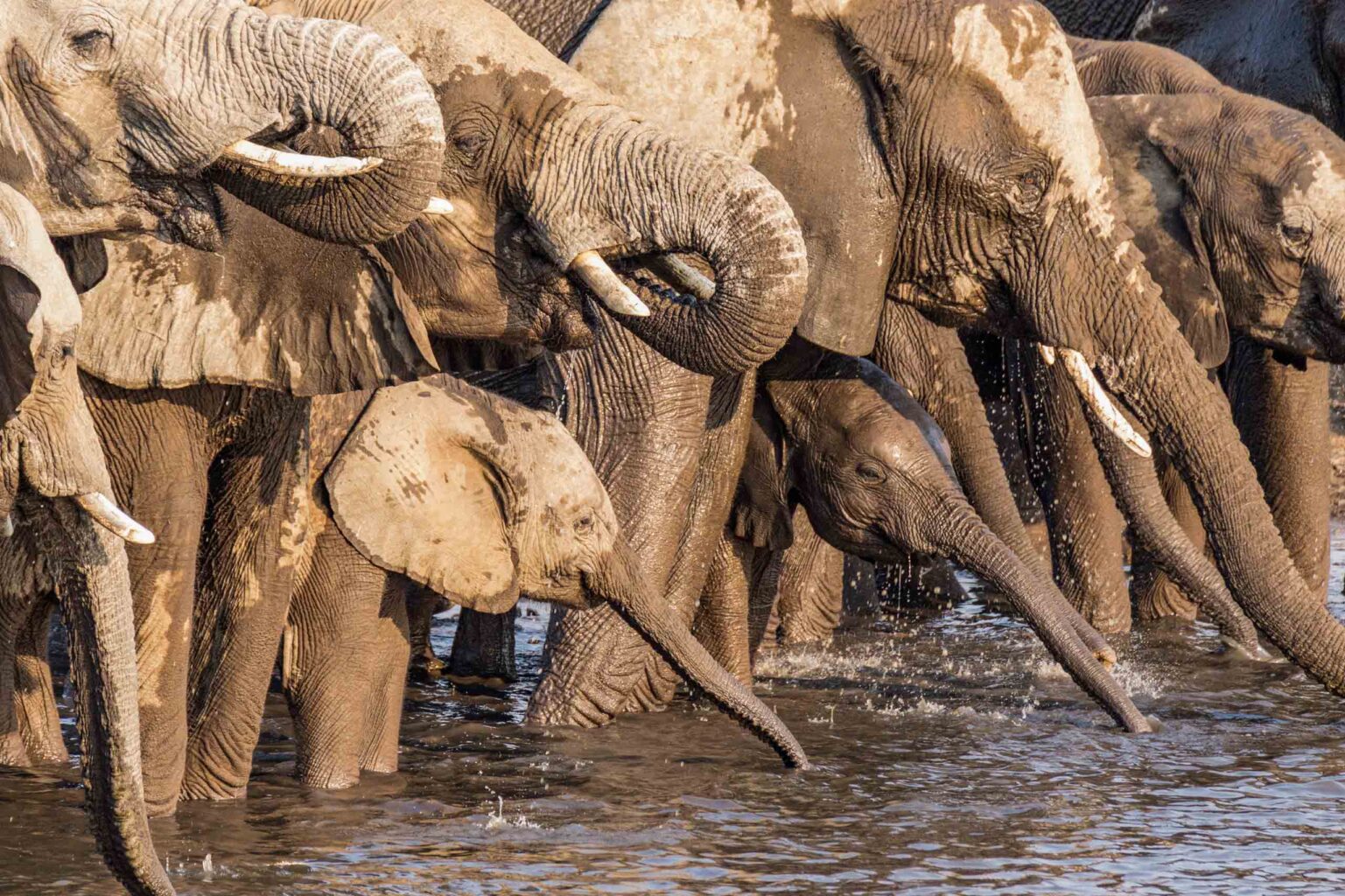
Tarangire National Park
Tarangire National Park is one of the lesser-known parks in Tanzania and therefore an excellent opportunity to safari without the crowds. Tarangire has a stunning landscape, and thanks to its year-round water, it is a wildlife haven as well—it actually has the largest concentration of elephant and buffalo herds in East Africa.
The Tarangire River draws animals, including migratory herds of wildebeest and zebra, during the rainless summer months, making for excellent game viewing. We’ll search for other plains game that lives in the park, including lesser kudu, oryx, eland, impala, giraffe, leopard, lion, and even python. Tarangire is a birder’s paradise, with more than 500 species of birds that include yellow-collared lovebird, stocking-thighed ostrich, yellow-billed and saddle-billed stork, orange-bellied parrot and red-and-yellow barbet.
At Tarangire, which covers a thousand square miles, we’ll journey through marshland and dry plains, see Africa’s iconic baobab tree and traverse beautiful woodlands full of acacia trees (a favorite for grazing giraffe!). Here we’ll have the opportunity to drive in open vehicles for 360-degree views of the park.
Visited on: Tanzania: Great Migration Safari, Tanzania Private Journey, and Tanzania Family Private Journey
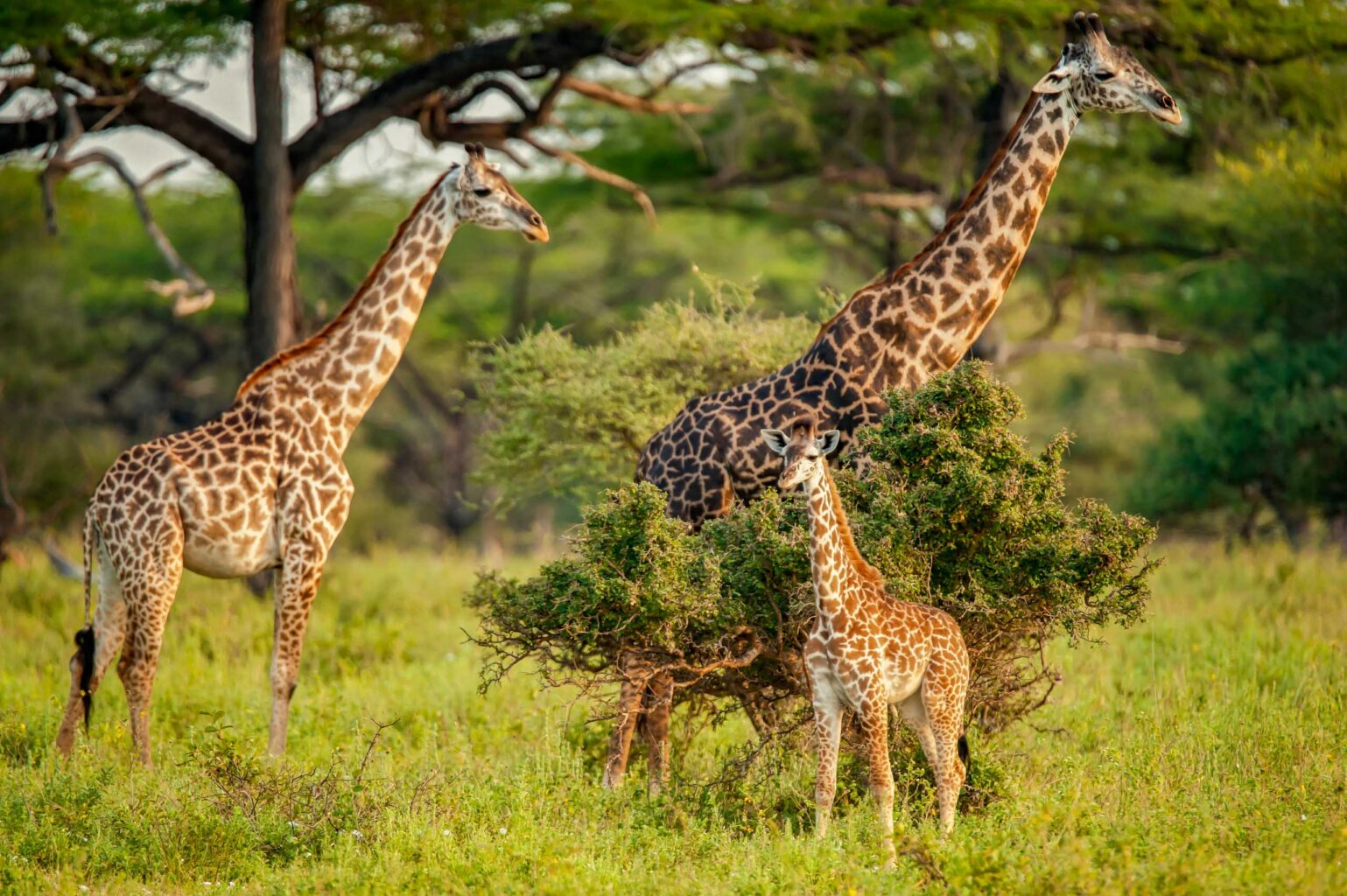
Selous Game Reserve/Nyerere National Park
The Selous Game Reserve is one of the largest remaining wilderness areas in Africa, stretching over 19,000 square miles of wild terrain and home to a large population of elephant, black rhino, cheetah, giraffe, hippo, and crocodile. The habitats are extremely diverse, from open grasslands dotted with baobab to miombo woodlands, riverine forest, wetlands, and lakes.
The reserve was originally established in 1922 and named for the “great white hunter” Frederick Courteney Selous, a 19th century British explorer and big game hunter who later helped lay the foundation stones of African conservation. Sixty years later in 1982, it was designated a UNESCO World Heritage Site due to its wildlife diversity and undisturbed nature. In 2019, Tanzania’s government upgraded two thirds of Selous to national park status (naming it Nyerere National Park in honor of Tanzania’s first president, Julius Nyerere), with the remaining area continuing to be called Selous Game Reserve. Nyerere National Park is now the largest national park in Tanzania.
Game viewing in this region is unparalleled, with relatively few visitors compared to its northern counterparts, so we will enjoy our explorations without crowds of other safari vehicles. The mighty Rufiji, East Africa’s largest river, winds through the park on its way to the Indian Ocean.
Visited on: Southern Tanzania: Off the Beaten Path
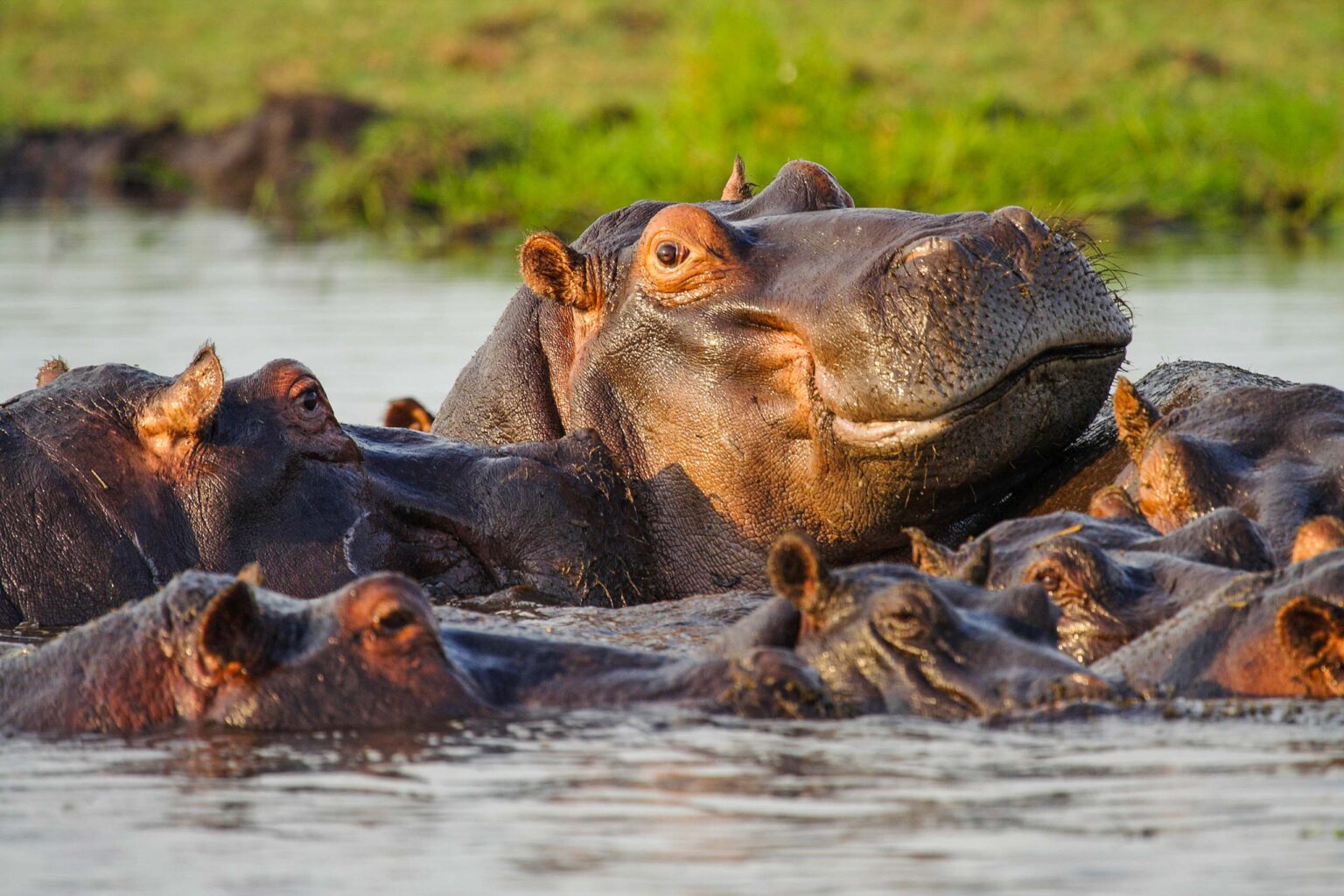
Mikumi National Park
Mikumi is the Swahili name for the borassus palm, which grows profusely in this idyllic setting. The park borders Selous Game Reserve and Nyerere National Park, and together, the areas share a vast and unique ecosystem of open savanna, dense forests, and waterholes. Located between the Uluguru mountains and the Lumango range, Mikumi is a haven for wildlife, especially during the dry season when large herds of migratory wildebeest, eland, gazelle, impala, zebras, and kudu gather around waterholes. More than 440 bird species have been recorded within the 1,000-square-mile park boundary.
The centerpiece of Mikumi is the Mkata Floodplain, which draws frequent comparisons to the famed Serengeti Plains, but with only a fraction of the visitors. Here lions rule their grassy kingdom and stalk the wildebeest, impala, zebra, and buffalo herds that migrate across it. Giraffe forage in the acacia stands along the Mkata River, a setting also favored by Mikumi’s elephants.
Visited on: Southern Tanzania: Off the Beaten Path
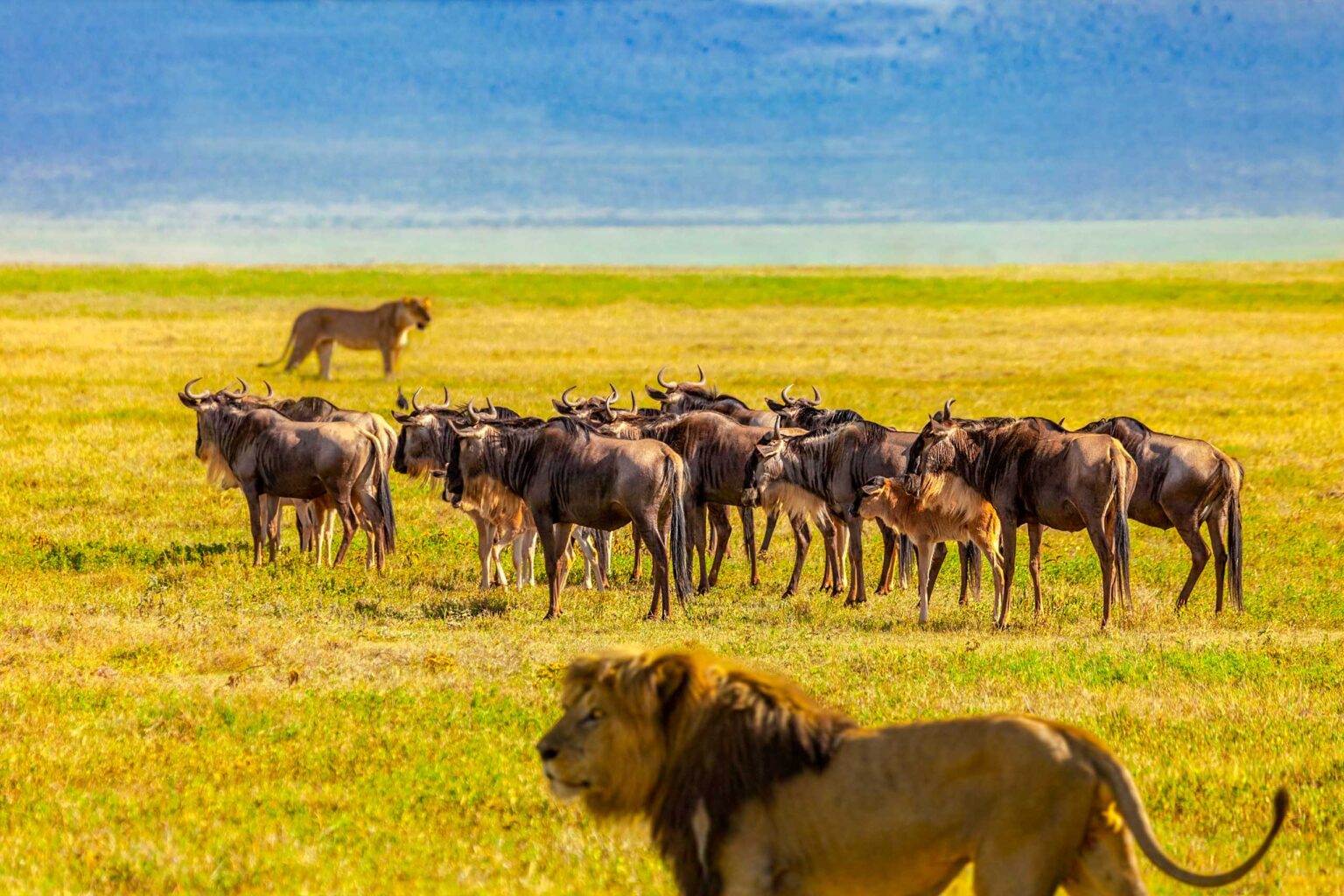
Ruaha National Park
Meaning “river” in Hehe, Ruaha National Park is characterized by the Great Ruaha River, which meanders through the park and provides a reliable water source for wildlife. The park’s history dates back to 1910 when it was first established as Saba Game Reserve as part of German East Africa. The addition of the Usangu Game Reserve and other important wetlands to the park in 2008 increased the park’s size to a remarkable 7,800 square miles, making it the second largest national park in the country.
Ruaha has the largest elephant and giraffe population of any African reserve. It’s also home to 40 percent of Tanzania’s lions, 10 percent of the world’s lion population, and the third largest wild dog population in all of Africa.
The very few camps in this vast park make for an authentic and uncrowded safari experience.
Visited on: Southern Tanzania: Off the Beaten Path
Learn More
Talk to an Expert
Our Africa Specialists know every detail about our Tanzania safaris. They will be happy to answer any questions and help you choose the journey that’s right for you. Contact us to learn more or book your trip today!

